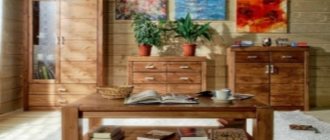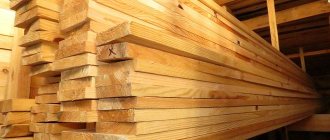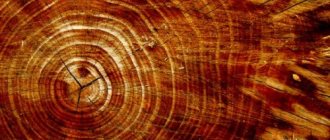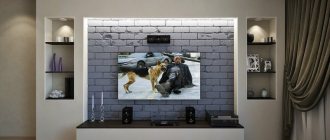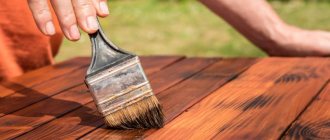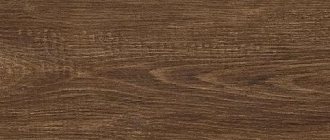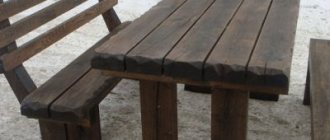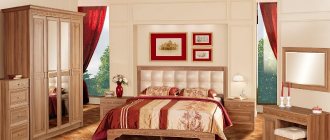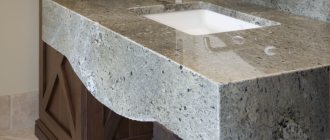“Wood does not affect the sound
of a string instrument with an electromagnetic sensor and subsequent analog and/or digital signal processing.”
In other words, electric guitars.
The dynamic head (loudspeaker), its acoustic design (cabinet), the microphone with its location (or their impulse), amplifier, sensors - all this influences. But the material from which the structure supporting the strings is made does not seem to exist. After all, it is non-magnetic, and only ferromagnetic strings act on the electromagnetic pickup. And many people believe in this, including musicians. Truth or fallacy?
Let's begin a series of experiments with wood, strings, sound vibrations and their display in electrical form. Let's listen for ourselves and see what the instruments show.
For the first experiments, a set of forty planks of the same format 130x50x11 mm was purchased, containing 35 types of wood (4 out of 40 are hornbeam samples treated with stains of different colors, which is also useful, two more are regular and baked ash, that is, subjected to heat treatment).
In this article we will look at 10 samples of wood used in guitar bodies (soundboards). Today it will be different types of mahogany mahogany
and similar in properties, as well as from a botanical point of view.
We will record acoustic vibrations from a sample of wood using a contact microphone, which will be a guitar piezo pickup Schaller Oyster 16050101
. To make the connection between the sensor and the sample quick-release, we will use a ukulele capo as a clip.
Absolutely right, the piezoelectric pickup will introduce its own frequency response into the signal - amplitude-frequency characteristic,
because this is
an instrumental
pickup, not in the laboratory, but in the musical meaning of the word.▍Instrumental
sensors, amplifiers, loudspeakers, unlike hi-fi, -
high fidelity
, - equipment for reproducing sound recordings with minimal signal distortion, - distort the signal, and are created specifically for this, in order to properly transform the sound to obtain an artistic effect.But we will have one pickup throughout the entire experiment, so we will hear and see the difference not between pickups, but between wood samples.
We will include a contact microphone in the Presonus AudioBox USB 96
. And this is a hi-fi device, with a frequency response as close as possible to linear.
As a spectrum analyzer, we will use the standard Specter Meter plugin from the Studio One Artist software package.
In the first experiment we will record the response to a noise pulse, which will be a blow on the sample with a hammer to adjust the kalimba. If you have an audio signal spectrum analyzer operating on the fast Fourier transform (FFT),
This method is no worse than using a sweep frequency generator (SWG) with measuring the amplitude of the output signal at different frequencies, which was used to study the frequency response at a time when FFT devices were not available.
It is in this way (by playing a white noise click pre-generated on a computer) that the response impulses of a guitar cabinet are obtained,
widely used by modern musicians. One pulse corresponds to a certain position of one microphone, therefore, to complete the sound picture, several pulses are often used during mixing.
To complete the experiment, let’s measure and weigh all the dies:
▍African white tree wawa, abacha or obeche
Malvaceae family.
Density 316. The wood is very light and soft. When I first picked it up, I thought it was balsa, although balsa is even more than twice as light and soft. Vava is known as the best material for seats in saunas, because it is free from resins and splinters, and most importantly, it is an excellent heat insulator, so it does not burn.
The fingerboard of the very beautiful Gibson Les Paul Studio Swirl guitar is made from Abacha. For guitar bodies, obeche was used by Hayman & Shergold and, for example, by Vladimir Sysoev’s Perm workshop Fashionguitars. An ideal choice if you need the lightest possible soundboard, and the sound can be adjusted with the top if necessary, for example, as in Music Man Majesty.
In the spectrogram of the Abacha sample we see a steep rise from 200 Hz to the first peak at 400 Hz, a plateau from 500 to 1000 Hz and then a gentle decline.
Where is mahogany used?
Europe learned about mahogany after Columbus discovered America. The French, Dutch and English made furniture for royalty from this beautiful wood. Some specimens have survived to this day and continue to delight their owners or visitors to historical exhibitions. Confirmation of its durability can be seen in the mahogany sideboard (early 19th century), which can be seen in the St. Petersburg Museum. For more than two centuries it has not lost its functionality and presentable appearance.
Furniture items made from mahogany are durable and reliable . The deep and rich shades of a mahogany chair will bring a stunning feeling of comfort and elegance to the atmosphere and add status to the interior. And the WISHBONE rocking chair will emphasize the play of fire in the fireplace room, the reflection of the flames will enhance the effect of the mystery of mahogany.
The furniture is high-status and expensive, but it is purchased to last. It is passed down by inheritance. And as an exclusive wine, it only becomes better and more valuable every year.
▍Meranti, Philippine mahogany
The lightest of all mahogany, not counting abacha. Also the Malvaceae family.
Density 434. Does not contain tannin, so the color of meranti does not change over time. The bodies of Cort G100, X250, and Ibanez RG421 electric guitars are made from meranti. When you get your hands on an unexpectedly light mahogany guitar, it's probably a meranti.
Meranti has a steep rise to the top of the frequency response with a significant drop in the region of 150 Hz. The peak is a plateau from 300 to 800 Hz with a steep slope at 450 Hz. After the plateau there is a gentle decline.
How to dye your hair yourself at home
To dye at home, select a suitable paint or tint balm and follow the instructions. Let's consider general recommendations:
- You should not choose permanent paints unless you are sure you want a rich color. Permanent paints can change the shade by 3-4 tones. Leave the product on your head for 30-40 minutes. If you are using paint for the first time, 20-25 minutes is enough;
- Tint balms color hair by 1-2 tones and retain the effect for up to 5 hair washing procedures. Keep the product on your hair for 10 to 40 minutes.
Important! If you want bright changes, but don’t dare to make drastic changes, paint only the ends. Otherwise, they can be cut off.
▍ Khaya or kaya, African mahogany
Density 480.
The wood pattern is very similar to meranti, the color is more red.
But this tree of the family is not malvaceae, but meliaceae
, like real mahogany. Used, for example, in the necks of Lag acoustic guitars.
Kaya has one pronounced peak at 250 Hz, a steep rise to which begins at 150. Then there is a steep decline to 450 Hz and a gentle rise to a second peak at 700 Hz. The second peak is 12 decibels lower than the first. Then there is a gentle decline.
CROSS FIBERS
The heirloom of the noble Sapele family (Entandrophragma cylindricum) also has wood with an alternating grain direction, which is externally manifested in a characteristic pattern of stripes with an iridescent sheen. It can often be found in batches of African mahogany planks, but sapele stands out among its brethren due to its deep red color and visual appeal. Use sapele in projects to create pops of color and texture. Treat this wood as you would other grained or patterned woods, removing the material in thin layers and reducing tool angles to avoid chipping.
Advantages
- Beautiful textured pattern of iridescent stripes
- Characteristic shine that creates the illusion of volume
Flaws
- Tendency to chip
- Distant resemblance to real mahogany
African mahogany (kaia) Khaya ivorensis
▍Makore, or cherry mahogany, African cherry, baku, abaca and duka
Density 540.
Belongs to
the sapotaceae family,
to which the shea tree, known as a source of cosmetic oil, belongs. Used in custom guitar bodies and trim.
Makore is a very linear and broad-based tree. The frequency response is a gentle rise to a plateau from 300 Hz to 10 kHz, after which there is a steep decline. The plateau has a small dip at 750 Hz and a peak around 2 kHz.
Other contenders for the crown
The special status of the “tree of kings” provokes sellers to put labels with the inscription “mahogany” on many species that have only a vague resemblance to royal wood.
Philippine mahogany (which is actually the name given to several species of Shorea tree) is often sold under the name lauan. This trade name has been in use for a long time and is therefore approved for use. The Asian species is widely used for the manufacture of veneer, cheap grades of plywood, door cladding and finishing parts. But you should not rely on the presence of the word “mahogany” in the name, since lauan is significantly inferior to real mahogany in stability and resistance to rotting, and also has a rougher texture.
Santos mahogany (Myroxylon balsamum) and the so-called “royal” mahogany (Pithecellobium arboreum) are widely used in the production of parquet due to their exquisite appearance. But they owe this mainly to their hardness, and if you compare them with real mahogany, the similarity can only be detected in color. Other properties of these species are significantly inferior to “royal wood”.
▍Koto, or African pterygota, avari, vari, kefe.
The mallow family,
which makes it related to abacha, linden and meranti, but which is denser and harder than these three.
Judging by the density of 576,
my specimen is from a Pterygota macrocarpa tree. With a density of 670, it would be Pterygota bequaertii. The outer layer of koto wood on a table tennis racket makes the athlete's stroke more rigid and biting. So wood influences attack and other impulse parameters not only in music, but also in sports.
Koto has a sharp rise from 190 to a flat peak of 220-290 Hz, from there a steep decline to 400 Hz, then a plateau to 4 kHz.
▍Cedar, cedar, fragrant cedrela, Spanish cedar
Density 587.
The smell of resin, which the tree uses to repel insects, is reminiscent of real cedar, hence the name.
Family Meliaceae
, like mahogany kaya. Grows in South America. So this Spanish cedar is not cedar, and not from Spain. Cedar is a close relative of Honduran mahogany, and has very similar properties, but is lighter, which is why it has become the favorite wood of Juha Ruokangas. For those who are hearing this name for the first time, he is the creator of top-notch electric guitars valued throughout the world. So tsedrela is a very musical and very guitar tree.
Tseder showed a gentle rise to 200 Hz, then a plateau with a slight dip at 400 Hz, then a gentle rise to a peak of 2 kHz, a decline to 3.5 kHz and a plateau to 7 kHz.
Cuban King
Cuban mahogany (Swietenia mahagoni)
Mahogany has been synonymous with luxury since English furniture makers Chippendale, Hepplewhite and Sheraton turned their attention to this wood at the end of the 18th century. Easy to work with, it was ideal for those times when carpenters had only hand tools at their disposal, and was perfectly suited for the complex carved decorations typical of expensive furniture. And its rich pinkish-beige color, darkening over time and acquiring red iridescent shades, secured its superiority, reflected in the widespread epithet “tree of kings.”
These classic craftsmen preferred to work with Cuban mahogany (Swietenia mahagoni), and for good reason. This breed was unsurpassed in almost all areas related to woodworking. Shipwrights were delighted with the wide planks, which were stable and resistant to rot. Furniture makers liked the density of the material, which perfectly accepted any finish. And buyers all over the world admired the rich color. But his popularity became the reason for his death when, in the middle of the 19th century. these trees were almost completely cut down and commercial use of the species ceased. The king is dead. Today's mahogany supplies are scarce, limited by sanitary logging and small plantings on the islands of the South Pacific, where the trees arrived a century ago with Spanish missionaries. But demand for kingwood continued to linger, leading to a search for substitutes, so timber merchants quickly came up with alternatives.
Advantages
- Exceptional stability
- Rot resistance
- Easily processed with hand and power tools, excellent for carving
- Receives toning and finishing perfectly
Flaws
- Rarity and high price
Honduran mahogany (Swietenia macrophylla)
▍Korina, yellow mahogany, royal mahogany, ofram, limba, terminalia splendid
Combret family.
Density 620. Used in the 1957 Gibson Explorer and Flying V, and has been widely used in guitar building since then. Korina wood is associated with the classics of hard rock and heavy metal, and is also very beautiful, which is why it is often mentioned by connoisseurs.
What is so special about the tone of korina? The first peak is like koto, the second like makore and tsedera.
Natural masks for the care of colored hair
If the coloring procedure took place in a salon, then use professional cosmetics. Otherwise, the combination of chemical products and natural ingredients will lead to negative consequences. For those who have used coloring at home, any masks that have a toning effect are suitable.
- Recommended ingredients for masks: cranberry, cocoa, cloves, honey, cinnamon.
- For tinting infusions: oak bark, chamomile, black tea, walnut.
▍Anegri, osan, mukangu, “Nigerian birch” or “sun tree”
Grows in Africa. It belongs to the sapotaceae family,
like the “cherry mahogany” makore.
Density 625.
Mother-of-pearl shine gives the anegri bars a resemblance to metal ingots. The smell is fresh, similar to the aroma of cedar. Used in exclusive guitars such as the ESP STREAM-GT Custom Antique Tea Sunburst.
The spectrogram of anegri is similar to corina, only the decline after the first peak has a pronounced decline.
▍Bibolo, African nut, lovoa, dibetu, tiger wood.
Density 642.
African tree
of the Meliaceae family,
like African kaya mahogany and true sweetenia mahogany. Examples of use: Fender Custom Shop Mustang GT 40 Masterbuilt Lovoa combo amp cabinet. MMG Custom Guitars is used in guitar making.
Bibolo with 160 Hz has a steep rise to 300, then a falling plateau to 650 and a steep rise to 900, then a plateau to 10 kHz. The plateau has a steep peak around 2.5 kHz.
Usage
Mahogany is considered a noble species, so its area of application is high-quality, first-class furniture, as well as finishing luxurious interiors of houses, palaces and yachts. Nowadays, due to its high cost, most of the wood is used for the production of sliced veneer for finishing less valuable species.
According to historical references, mahogany was first used as a finishing material in 1661: it was then that the British used it to furnish the royal castle of Hampton Court. However, this information cannot be considered definitive, since in different eras mahogany wood was called completely differently. Mahogany first came to Russia during the reign of Peter the Great and reached its peak of popularity in the 19th century.
▍Sapele
Tree from Africa, family Meliaceae.
Density 694. Like haya mahogany, from the same family, sapele is called
African mahogany.
It has a very beautiful texture with a three-dimensional effect, and is widely used for making electric and acoustic guitars. Much denser than kaya, which has a density of 480.
The sound of sapele has a steep rise from 100 to the main peak of 200 Hz, from there a steep decline to 300 Hz, then a plateau to 5 kHz and a rounded decline: first flat, then steep.
Unique properties of wood
- Khaya ivorensis (African mahogany) - wide range of colors, from pale pink to reddish brown, sometimes interspersed with streaks of a darker shade. The wood is straight-grained, the fibers are twisted. The narrow medullary rays in the section are located horizontally. Wood is quite easy to work with, but the tendency to roughness forces craftsmen to use only high-quality tools. Furniture made from African mahogany is strong, reliable, with perfect and natural coloring.
| Characteristics | ||||||
| Density (kg/m3) | specific gravity | hardness (N) | modulus of rupture (Mpa) | modulus of elasticity (GPa) | Crushing strength (Mpa) | shrinkage (%) |
| 640 | 52, 64 | 4 760 | 91,0 | 10,60 | 49,0 | radial - 4.2; tangential - 5.7; volumetric - 10.0; T/R ratio 1.4 |
- Swieturia macrophylla (American mahogany) is a soft pinkish-brown to dark brown wood with a reddish tint. It is considered one of the best breeds for making luxury furniture. The material is extremely resistant to various types of abrasion and mechanical stress, and is therefore difficult to process. Saturation and hue change with age. Every year the product becomes only more beautiful and noble. But the tree is listed as vulnerable due to a 20% decline in recent years caused by a decline in its native range.
| Characteristics | |||||
| density of mahogany (kg/m3) | hardness (N) | modulus of rupture (Mpa) | modulus of elasticity (GPa) | Crushing strength (Mp) | shrinkage (%) |
| 590 | 4,020 | 80,8 | 10,06 | 46,6 | radial - 2.9; tangential - 4; volumetric - 7.5; T/R ratio 1.4 |
- Swietenia macrophylla (Brazilian mahogany) is a dense, medium-weight wood. On the cuts you can see a clear striped pattern. The structure and texture are fine to medium and uniform. The color palette ranges from pale pink to golden brown. Among the advantages of the breed, one can note the ease of processing and polishing, and resistance to fungus. The downside is the extra effort required to install the fasteners. Widely used to create exclusive, respectable furniture.
| Characteristics | ||||||
| Density (kg/m³) | humidity (%) | hardness (N) | modulus of rupture (N/mm²) | modulus of elasticity (N/mm²) | compression parallel to grain (N/mm²) | shrinkage rate |
| 560—850 | 15 | 3840 | 54,5 | 9555 | 37 | low |
▍Alder mahogany
❖ A significant peak in the range of 200-400 Hz
(remember, we have samples of the 130x50x11 mm format) was noticed in:
- Abacha,
- meranti,
- kaya,
- koto,
- anegri,
- Corina
- sapele.
And this peak is characteristic of the most common (not only) in guitar building, the most accessible, and at the same time beautiful musical wood - linden.
❖ Second peak around 2 kHz
All considered samples of mahogany have a density above 500 kilograms per cubic meter.
And this is the peak characteristic of alder
- the second most common wood for guitar soundboards, familiar to everyone for the characteristic signature sound of the Fender Stratocaster.
We can hear such linden and alder mahogany with our ears and see with our eyes on the screen of a spectrum analyzer when it comes to wood samples. The sound of an assembled electric guitar is, of course, more complex. In the following publications we will get acquainted with its other components.
▍Conclusions and prospects
❒ Thesis.
We saw and heard the difference in the sound of identical blows of one hammer on samples of different wood of the same size, recorded with one piezoelectric sensor, and a good, broadband one, from the German company Schaller.
Samples of different types of musical wood, that is, used in the manufacture of musical instruments, namely guitars, showed a repeating tendency towards the lower and upper peaks of the frequency response, which can be called “linden” and “alder” formants, respectively. These words are often used by connoisseurs to describe the sound of electric guitars, and today we saw their physical meaning on the screen of an audio signal spectrum analyzer.
❒ Antithesis.
It is clear that the blow of a hammer, even if it is a hammer for tuning a kalimba, is not a full-fledged pulse of high duty cycle white noise, which is used to remove cabinet pulses.
❒ Synthesis.
A logical continuation of the experiment is the creation of an installation in which it will be possible to apply sound vibrations to a wood sample from any generator or player, or from the same guitar, in order to test the samples on different signals. We already have a sensor, we need an audio frequency vibration emitter with a not entirely poor amplitude-frequency response. Based on a small powerful speaker from a TV or something similar. This is in future plans.
Of course, we will also pull strings onto the samples and record vibrations with an electromagnetic sensor. For this purpose, a stand will soon be built with the ability to quickly change the thin block - the test sample of wood.
Next, we will study experimentally the passage of an audio signal through the instrumental audio path: the influence, first of all, of the preamplifier and cabinet, the frequency response of which especially affects the guitar sound.
Overdrive effects
, - overdrive, distortion (distortion), fuzz (spraying), crunch (crunch), - introduce new harmonics into the signal, and usually have their own tone controls. The final amplifier, which in the classic version is tube amplifier, also affects the sound and is subject to saturation of the magnetic circuit of the output transformer.
And finally, let's find out how much the wood features of an electric guitar are audible in the mix, and why some musicians with experience in concert performances (especially lovers of fat, overdriven sound, playing in standard tuning on standard gauge strings) deny them.
Spoiler:
if the playing style and musical style of the performer imply obtaining a certain sound, he tunes the device to this sound and adjusts his playing, in which the wood and other features of the instrument can act as both a help and a hindrance. This tuning naturally becomes automatic, which the guitarist may no longer notice. As a result, the same sound can be heard from his amp or stack with different guitars.
There are a lot of different tone-correcting “gadgets” in the form of separate tone blocks on the channels of amplifiers, hardware pedals and software plug-ins, and they are becoming and will become more and more numerous. This is because different musicians search for and find their own sound, which is inevitably influenced by the material of the soundboard and neck.
How to dye your hair?
It is important for every girl to have a chic hairstyle, which is impossible to imagine without a beautiful hair color. Recently, dyeing strands in mahogany color has become extremely popular among the fair sex. To do this, you can choose several options for the procedure:
- using henna;
- using tint balms and shampoos;
- using professional paint.
Each of the above types of painting has both pros and cons. For example, shampoos and conditioners provide the most gentle effect on hair and are characterized by a quick effect. In addition, with the help of these tinting products you can even paint over gray hair, changing its color by several tones. The only drawback of such tonics is that to maintain a contrasting shade, the curls need to be periodically tinted. This procedure should be repeated especially often for a brunette.
Read also: color of green grass IN COLOR BALANCE
As for professional dyes, they contain additional chemical ingredients that help enhance the shade and restore the health of the strands. To get a beautiful color, experts recommend choosing shades that are close to your natural hair tone. In addition, the color depth depends on the paint exposure time. No matter how durable the paint is, it is recommended to renew it every month.
Coloring using henna is considered the most useful and safest. Since this dye is natural (it is made from the leaves of an Asian tree), it gives the curls additional elasticity, volume and thickness, making them shiny. To get the desired shade, you need to purchase a certain type of natural dye. As a rule, it is presented in the form of Sudanese, Indian and Iranian paints, each of which has its own nuances in coloring.
If hair dyeing at home is being done for the first time, then the novice hairdresser needs to follow the following instructions.
- First of all, you should prepare the dye, for which henna is mixed with basma in a ratio of 1: 2. If the girl’s hair color is chestnut or medium brown, then you need to take twice as much henna as basma. This will provide a brighter shade. In addition, it is recommended to add a few tablespoons of cranberry juice to the composition. Everything is thoroughly mixed (cranberry juice, henna) and heated to a temperature of +80-90 degrees.
- After the prepared mixture for dyeing hair has cooled to a comfortable temperature, add the yolk of an egg to it and apply everything to the strands, leaving for 30 minutes. Then basma is applied for 15-30 minutes (it all depends on the desired shade). It is recommended to insulate your head with a plastic cap.
- The procedure ends with washing your hair using nourishing shampoos.
If desired, you can apply a restorative balm to your curls.
At home, hair is dyed with henna and other methods. For example, many ladies, to obtain a red-red hue, mix henna with walnuts, for which they are first crushed in a meat grinder and boiled for 10 minutes in a small amount of water. The result is a mixture that has the consistency of liquid gruel; it is applied to the hair for 30 minutes. Then everything is washed off and henna is applied, previously mixed with the yolk. It is left for at least 2 hours, then washed off and as a result, even dark brown-haired women get a beautiful wine shade on their hair.
You can also add intensity to the mahogany color with the help of fragrant cloves, which are added to dry henna (no more than 2 teaspoons). The resulting powder mixture is diluted in water and applied to the strands, leaving for 30 minutes to 2 hours. To slightly mute the red tone, but get a bright color, you can add 2 teaspoons of ground coffee to henna instead of cinnamon. Everything is poured with hot water and infused for 15 minutes. The result is an unusual brown shade with a slight redness.
In cases where there is no time to prepare dye mixtures, it is best to use ready-made professional dyes, which are applied to the hair as follows.
Read also: What is Murano glass
- First of all, you need to throw an old towel over your shoulders or put on a T-shirt that will protect your clothes from the dye. After this, you should comb your hair and divide it into 4 sections (2 vertical and 2 horizontal). Three sections need to be twisted and secured, and the remaining sections need to be painted. But don't forget to apply Vaseline around the edges of the ears (this will prevent the skin from staining).
- Then gloves are put on and the paint is prepared as indicated in the instructions for it. Apply it to strands up to 1 cm wide, slightly retreating from the roots of the hair. The dye must be applied along the entire length of the strands.
- After the work is completed with the first section, proceed to the rest.
Next, leave the paint for the time specified in the instructions, after which it is washed off with warm water and shampoo and conditioner are applied.
